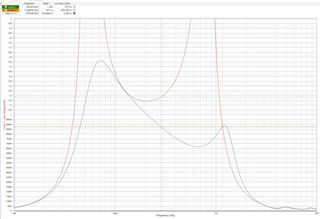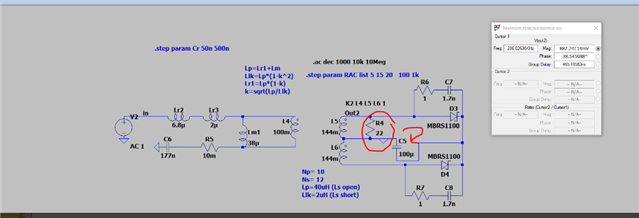Tool/software:
Hi,
I designed an LLC using the UCC256404 controller, for the design I used the excel sheet and the simplis model to calculated the values and simulated the model which all went fine. Now that I'm measuring I'm seeing some discrepancy's with regarding the switching frequency.
Spec's
48Vin
24Vout
6.5A max load
Desired resonance frequency 125kHz
Transformer 10:12
Lp = 50.2uH (measured)
Llk = 2.2uH (measured while shorting secondary)
6.8uH external resonance inductor
177nF resonance capacitor
Burst disabled
So I started with the excel sheet during the design and came with the values given above (transformer was chosen as staring point not ideal ratio).
The excel sheet showed a frequency range of 160kHz to 220kHz for full load range (fixed input voltage) and for a load of 1A the expected frequency would be 1.3 timed Fn so 1.3*125kHz=162.5k
But measurement showed roughly 280kHz so much higher then expected, so I started to what is wrong and my conclusion was that the gain of the resonant tank was higher then expected so did some measurement on the resonant tank.

Red is LLC gain no load
Blue is LLC gain with 22ohm load (roughly 1A)
Which showed my conclusion that the needed gain of 0.88 was reached at around 280kHz this graph did not match the excelsheet at all so I must have filled in some wrong values.
To verify I made simulation model based on the measurement and show roughly the same values
Spice simulation with 4ohm 22ohm and 1kOhm of resistance.
So the big question why is the excelsheet different from measurement ? I also tried the integrated inductor but also different values.
4721.UCC25640x Design Calculator Rev4.0.xlsx



